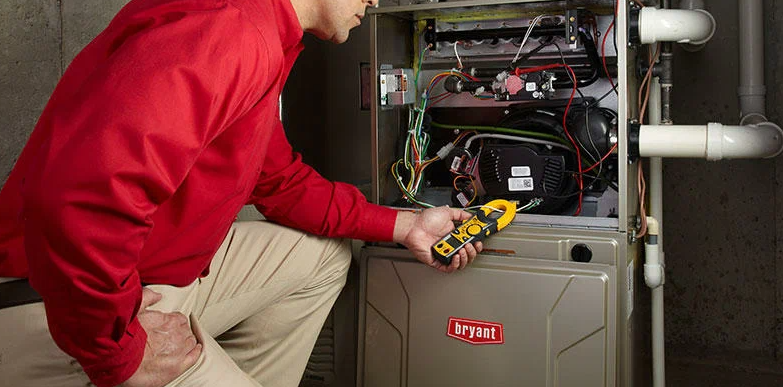-
NEUIGKEITEN
- EXPLORE
-
Seiten
-
Blogs
-
Courses
-
Filme
Steps to Troubleshoot Uneven Heating in Your Home

Uneven heating is one of the most common comfort issues homeowners face during the colder months. Some rooms may feel perfectly warm, while others remain chilly no matter how high you set the thermostat. This issue not only impacts comfort but can also signal inefficiencies within your heating system. If you notice these problems persisting, contacting a professional such as a Furnace Repair Specialist in Stone Park, IL can make a big difference. However, before calling in an expert, there are several troubleshooting steps you can take on your own.
Understanding the Causes of Uneven Heating
Uneven heating can occur for a variety of reasons. Identifying the source is the first step toward fixing the issue. Some common causes include:
-
Blocked or closed air vents
-
Poor insulation in certain rooms
-
Dirty air filters restricting airflow
-
Malfunctioning thermostats or sensors
-
Ductwork leaks or improper design
-
Aging or inefficient furnace systems
Knowing these potential causes will help you narrow down the problem and decide whether it requires professional attention.
Step 1: Check and Adjust Air Vents
One of the simplest troubleshooting steps is to inspect all the vents in your home. Sometimes, vents get blocked by furniture, rugs, or curtains, which prevents warm air from circulating properly.
-
Ensure vents are open in colder rooms.
-
Clear away any obstructions.
-
Balance airflow by partially closing vents in warmer rooms to redirect heat.
This small adjustment can often make a noticeable difference in room-to-room comfort.
Step 2: Replace or Clean Air Filters
Air filters play a critical role in maintaining good airflow throughout your home. A clogged filter restricts airflow, making it harder for warm air to reach certain areas.
-
Check filters every 1–3 months.
-
Replace disposable filters or clean reusable ones as recommended by the manufacturer.
-
Keep a consistent schedule for maintenance to ensure optimal airflow.
Clean filters also help maintain better indoor air quality while reducing strain on your furnace.
Step 3: Inspect the Thermostat
Your thermostat is the command center for your heating system. If it’s not functioning properly, it may cause inconsistent heating.
-
Make sure the thermostat is set to “heat” mode.
-
Check battery life if it’s a battery-operated model.
-
Ensure the thermostat is located in a central area away from drafts, direct sunlight, or heat sources.
For larger homes, consider installing a smart thermostat or zoning system that allows for more precise control of temperatures in different rooms.
Step 4: Seal Drafts and Improve Insulation
Even the most efficient furnace cannot overcome poor insulation or drafts. If certain rooms are consistently colder, check for areas where heat may be escaping.
-
Seal gaps around windows and doors with weatherstripping or caulking.
-
Add insulation to attics, basements, or crawl spaces.
-
Use thermal curtains to reduce heat loss in drafty areas.
By improving insulation, you not only solve uneven heating but also reduce energy bills.
Step 5: Inspect Ductwork for Leaks or Blockages
Leaky or poorly designed ductwork is another common reason for uneven heating. Warm air may escape before reaching the intended rooms, or blockages can reduce airflow.
-
Look for visible gaps or disconnected ducts in accessible areas.
-
Listen for unusual whistling sounds, which may indicate leaks.
-
Consider hiring a professional for duct cleaning or sealing services.
Properly sealed ducts ensure that heated air is evenly distributed throughout your home.
Step 6: Evaluate the Furnace’s Performance
Sometimes the issue lies within the furnace itself. An old, undersized, or poorly maintained furnace may not provide consistent heating.
-
Pay attention to unusual noises, which may suggest internal issues.
-
Note how often the system cycles on and off.
-
Compare heating performance in past winters—if the system struggles more now, it may be losing efficiency.
If your furnace is over 15 years old, it might be time to consider an upgrade.
Step 7: Consider Professional Assistance
If troubleshooting doesn’t resolve the issue, it’s best to contact an expert. A certified professional can diagnose and fix problems that homeowners may overlook, such as:
-
Faulty blower motors
-
Electrical control issues
-
Damaged or misaligned components
-
System recalibration for efficiency
A Furnace Repair Specialist in Stone Park, IL can provide a thorough inspection, offer tailored solutions, and ensure your heating system operates at peak performance.
Preventing Uneven Heating in the Future
Once the issue is resolved, preventative maintenance can help you avoid recurring problems. Some best practices include:
-
Scheduling annual furnace tune-ups.
-
Regularly changing air filters.
-
Keeping vents and ducts clean.
-
Monitoring insulation and sealing drafts.
-
Using programmable thermostats for even temperature regulation.
By taking these proactive steps, you’ll not only improve comfort but also extend the lifespan of your furnace and reduce utility bills.
Final Thoughts
Uneven heating is frustrating, but with a systematic approach, you can often identify and resolve the problem. Start with simple checks like vents and filters, then move on to insulation and ductwork inspections. If the issue persists, don’t hesitate to seek professional help. Partnering with a skilled Furnace Repair Specialist in Stone Park, IL ensures your home remains warm, efficient, and comfortable throughout the winter months.
- Art
- Causes
- Crafts
- Dance
- Drinks
- Film
- Fitness
- Food
- Spiele
- Gardening
- Health
- Home
- Literature
- Music
- Networking
- Other
- Party
- Religion
- Shopping
- Sports
- Theater
- Wellness


